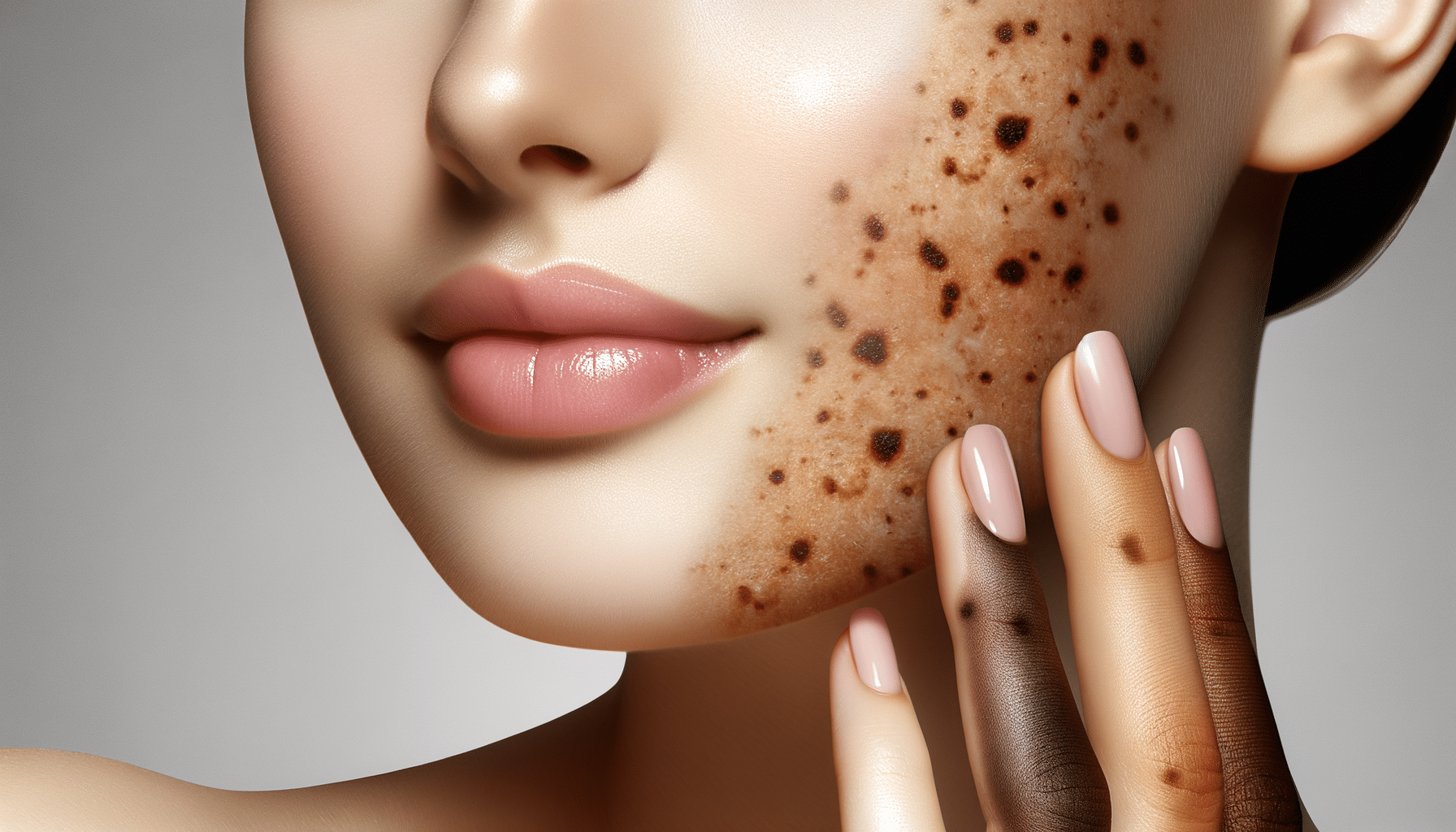
Dark Spots: Understanding and Managing Skin Hyperpigmentation
Understanding Dark Spots
Dark spots, medically known as hyperpigmentation, are a common skin concern characterized by patches of skin that become darker than the surrounding areas. This discoloration occurs when an excess of melanin, the brown pigment that produces normal skin color, forms deposits in the skin. While dark spots are not typically harmful, they can affect a person’s confidence and are often seen as a cosmetic nuisance.
Various factors contribute to the development of dark spots, including sun exposure, hormonal changes, and skin injuries. Understanding the root cause of these spots is crucial for determining the appropriate treatment. For instance, sun exposure can lead to solar lentigines, commonly known as sun spots, while hormonal changes during pregnancy might result in melasma. Additionally, post-inflammatory hyperpigmentation can occur following skin injuries like acne.
Addressing dark spots involves a comprehensive approach that includes prevention, treatment, and maintenance. By understanding the underlying causes and the types of dark spots, individuals can better tailor their skincare regimen to effectively manage and reduce the appearance of these spots.
Preventive Measures
Prevention is a key strategy in managing dark spots. One of the most effective preventive measures is the regular use of sunscreen. Ultraviolet (UV) rays from the sun can trigger melanin production, leading to dark spots. Therefore, applying a broad-spectrum sunscreen with a high SPF can significantly reduce the risk of developing new spots and prevent existing ones from darkening further.
In addition to sunscreen, wearing protective clothing and seeking shade during peak sun hours are effective strategies. Hats, sunglasses, and long-sleeved clothing can offer additional protection from harmful UV rays. Moreover, incorporating antioxidants into your skincare routine can help protect the skin from environmental damage. Ingredients like vitamin C and E are known to neutralize free radicals, which can contribute to skin discoloration.
Adopting a holistic skincare routine that includes gentle cleansing and regular exfoliation can also aid in preventing dark spots. Exfoliating helps remove dead skin cells, promoting cell turnover and potentially reducing the appearance of dark spots over time. However, it’s important to choose products that suit your skin type to avoid irritation.
Treatment Options
When it comes to treating dark spots, there are several options available, ranging from over-the-counter products to professional treatments. Topical treatments often include ingredients like hydroquinone, retinoids, and alpha hydroxy acids (AHAs), which are known for their skin-lightening properties. These treatments work by reducing melanin production or speeding up cell turnover to fade dark spots.
For more persistent dark spots, professional treatments such as chemical peels, laser therapy, and microdermabrasion may be recommended. These procedures are typically performed by dermatologists and can offer more dramatic results. Chemical peels involve applying a solution to the skin that causes it to exfoliate and eventually peel off, revealing new, less pigmented skin beneath. Laser therapy targets melanin deposits, breaking them down to lighten dark spots.
It’s important to consult with a dermatologist to determine the most suitable treatment plan, as some treatments may not be appropriate for all skin types. Additionally, professional guidance can help minimize potential side effects and ensure the best possible outcomes.
Natural Remedies
For those who prefer a more natural approach, there are several home remedies that may help lighten dark spots. Ingredients like lemon juice, aloe vera, and apple cider vinegar are often touted for their skin-brightening properties. Lemon juice contains citric acid, which can help exfoliate the skin and reduce pigmentation. However, it should be used with caution, as it can make the skin more sensitive to sunlight.
Aloe vera is known for its soothing and healing properties, and some studies suggest it may help reduce pigmentation over time. Applying fresh aloe vera gel to dark spots and leaving it on overnight can be a gentle and natural way to address hyperpigmentation.
Apple cider vinegar contains acetic acid, which may help lighten pigmentation. A diluted solution can be applied to dark spots using a cotton ball, but it’s important to perform a patch test first to avoid irritation. While natural remedies can be beneficial, they often require consistent use over a longer period to see noticeable results.
Maintaining Results
Once dark spots have been treated, maintaining the results is essential to prevent recurrence. Consistent use of sunscreen remains crucial, as UV exposure is a major trigger for hyperpigmentation. In addition, continuing with a skincare routine that includes antioxidants and gentle exfoliation can help keep the skin looking even-toned.
Regular follow-ups with a dermatologist can also be beneficial, especially if you are using prescription treatments. They can monitor your progress and make adjustments to your treatment plan as needed. Additionally, staying hydrated and maintaining a healthy diet rich in fruits and vegetables can support skin health from the inside out.
By adopting a comprehensive approach that combines prevention, treatment, and maintenance, individuals can effectively manage dark spots and enjoy a clearer, more radiant complexion.